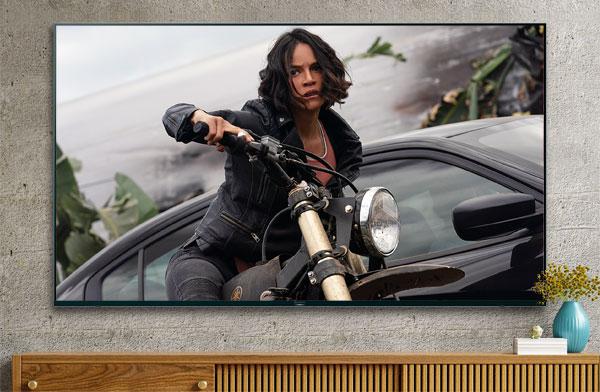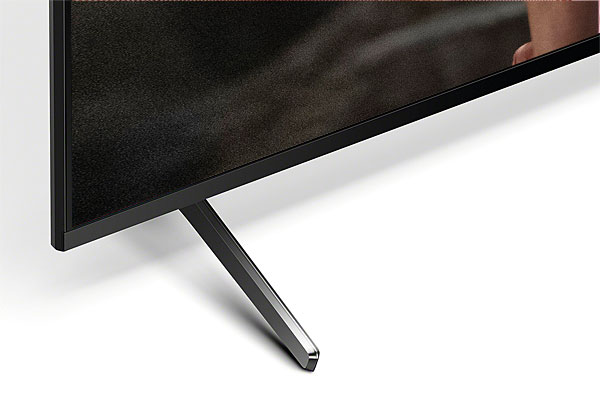Sony XR-65X90J 4K HDR TV review

 Sony's latest mid-range TV isn't a member of the Mini LED glitterati. Will that put off John Archer?
Sony's latest mid-range TV isn't a member of the Mini LED glitterati. Will that put off John Archer?
Many TV brands have adopted Mini LED technology this year, but Sony is having none of it. Its 4K LCD models for 2021, including the upper mid-range 65X90J under examination here, persist with the 'standard' LED lighting that LCD displays have been using for years. Happily, though, this certainly does not prevent the 65X90J from being seriously desirable.
It looks the part, for starters. With its blade-style feet (either fit them close together or under the screen corners) and slim screen frame, it does as much as it can not to distract you from either your decor or what you're watching.
The set uses a VA-type LCD panel illuminated by direct lighting and 32 local dimming zones. This is a far cry from the 448 zones deployed by Samsung's 50in Mini LED-toting 50QN90A. However, we've seen enough Sony LCD TVs now to know that it's not just the number of dimming zones that counts, but what you do with them. And in the 65X90J's case, 'what you do with them' is drive them via Sony's impressive new Cognitive XR processor.
This processor, as its name just about suggests, has been designed with a focus on reproducing images that look less like pictures on a screen and more like the real world as your eyes perceive it. It also marks the biggest single specification change from this TV's 2020 predecessors, the well-regarded XH9005 models, which used Sony's X1 Extreme chipset.
Better Than Okay, Google
The 65X90J runs the Google TV operating system, which proves to be a solid upgrade over the previous Android TV. You still get handy convenience features, such as built-in Chromecast and Google Assistant support, but with a more inviting-looking and focused onscreen menu system, plus superior content recommendation and search features.

There's currently no support, however, for YouView or Freeview Play, and the only catch-up app available for the UK's main terrestrial broadcasters is My5. There's no BBC iPlayer, ITV Hub or All4. These are supposed to be coming, but we've been hearing that for a long time now.
Available HDR flavours are HDR10, Dolby Vision and HLG, but not HDR10+. You can run Dolby Vision in conjunction with a light sensor that can auto-adjust the image's brightness and tone curve depending on room conditions.
The 65X90J's connections include four HDMI ports, two of which are built to the 2.1 specification capable of handling 4K/120Hz feeds from the latest consoles and PCs. But there are limitations to the 65X90J's gaming prowess, which we'll cover later, and one of the HDMI 2.1 ports is also used for the eARC audio passthrough system, so if you need to use that you'll only have one full-fat HDMI socket left for source gear.
Both Netflix and IMAX have given this Sony their seal of approval in the form of Netflix Calibrated mode and IMAX Enhanced compatibility. The former sets the TV's picture settings to imitate the conditions Netflix's own content is mastered in (apparently), while the latter means the TV has been assessed as good enough to unlock the full picture potential of content created using IMAX's proprietary mastering techniques.
Some of this IMAX Enhanced content can be found on Sony's Bravia Core streaming service, which uses speeds of up to 80Mbps to deliver cleaner 4K video streams.
For sound, the TV can decode and play Atmos tracks, and carries Sony's Acoustic Multi-Audio system, which places sound-positioning tweeters on the chassis rear.
Take It Up A Notch
The 65X90J is a marked improvement over its XH9005 predecessor. The first thing that wows is just how much justice it does to the phenomenal detail and sharpness of all-time favourite 4K Blu-ray platters, such as the 'IMAX' parts of The Dark Knight, Tenet and Mission Impossible: Fallout.
 |
Home Cinema Choice #351 is on sale now, featuring: Samsung S95D flagship OLED TV; Ascendo loudspeakers; Pioneer VSA-LX805 AV receiver; UST projector roundup; 2024’s summer movies; Conan 4K; and more
|

















































